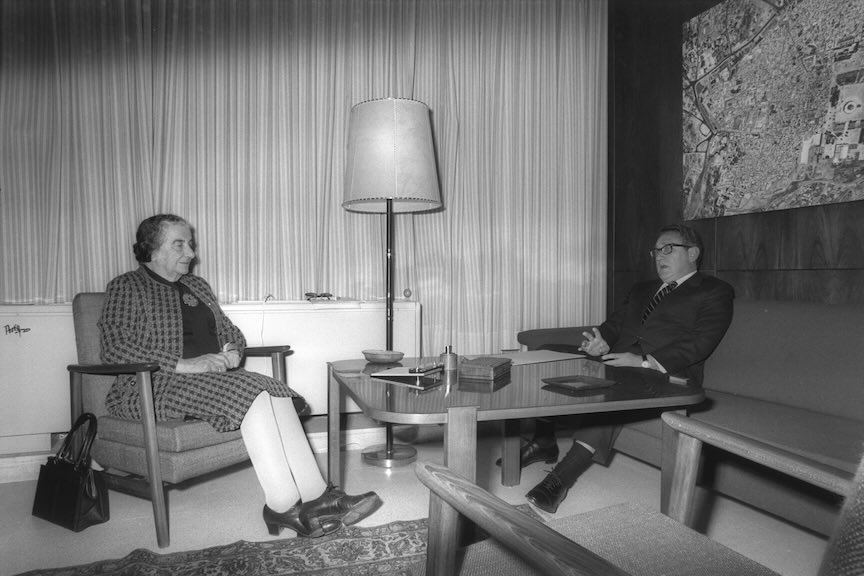1973- Peace Talks Begin

Kissenger Golda
At the end of the Yom Kippur Israel was on the road to Cairo and the Egyptian third army was caught off,Negotiations began from that point.
On October 25, 1973, when the ceasefire went into effect, Israel had completely cut off the Egyptian Third Army, leaving them isolated in the desert without access to food or water. The Egyptians demanded that Israel withdraw first to the line of October 22nd and then eventually across Sinai. Israel was most interested in getting back its prisoners. Israeli and Egyptian Army generals met at Kilometer 101 on the road to Cairo to attempt to negotiate their differences and maintain the ceasefire, which was somewhat tenuous. It became clear that the two sides were not going to reach an agreement by themselves and would require the intervention of the United States.
Egyptian President Anwar Sadat made the strategic decision that he wanted to work through the United States and eventually aligned his country with the West and not the Soviets. He first sent his Deputy Foreign Minister, Ismail Fahmy, to Washington to sound out Kissinger and prepare the ground for his planned visit to Egypt. In the meantime, Golda Meir rushed to Washington to present Israel’s position and ensure decisions were not being made without her knowledge. On November 1 at Blair House, Golda stated:
Because things have reached the stage where, beyond the issues of substance, things must be made clear. We need to know the plans that are being discussed. We need to know if we get things after they're done. After it has been worked out by other parties? Maybe Israel has to do everything Egypt wants. But we have to know what is being planned between the parties. Are there plans for negotiations? We are responsible to our people.
Kissinger sought to assure Golda that he had Israel’s interests at heart. On November 5th, Kissinger left for his first visit to an Arab state. He started in Morocco and Tunisia, two friends of the US. Late on November 6th, Kissinger arrived in Cairo. On November 7th, he met Sadat for the first time. Kissinger convinced Sadat to agree on a plan that would meet both Egypt's and Israel's needs. He presented the following six-point plan:
1) Egypt and Israel would scrupulously observe the ceasefire;
2) Discussion would begin between Israel and Egypt on the return to
October 22nd lines (before Egypt's Third Army was cut off);
3) The town of Suez would receive daily supplies of food and water, and the wounded would be evacuated;
4) The Israeli checkpoints on the Cairo Suez road would be replaced by UN checkpoints, but the Israelis could remain to “help” the UN;
5) As soon as the UN checkpoints were established, all prisoners would be exchanged.
Finally, though not formally part of the agreement, Sadat agreed to ease the blockade in the Straits of Bab el-Mandeb, provided that Israel limited the number of ships passing through. Israel accepted these terms, constituting the initial steps in what would become a multi-year journey toward peace between Israel and Egypt.
 >
>